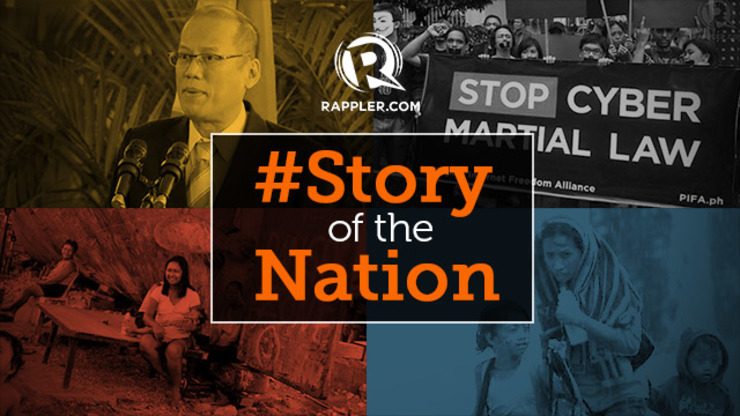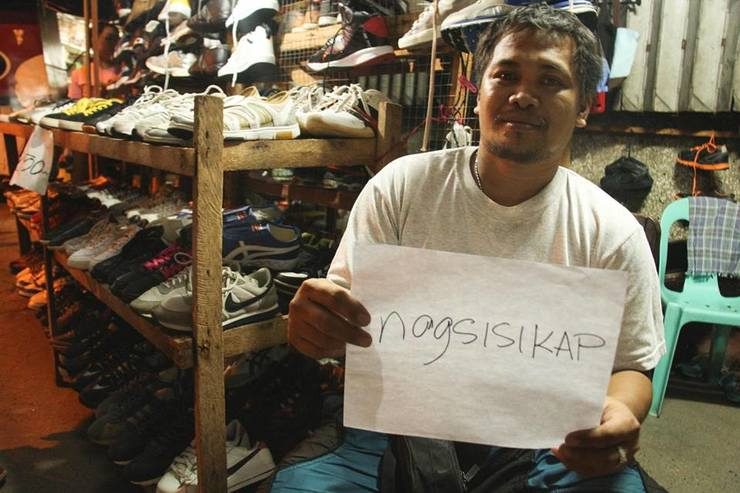SUMMARY
This is AI generated summarization, which may have errors. For context, always refer to the full article.

MANILA, Philippines – The past 12 months have been filled with ups and downs, with moments that inspired, disheartened, or enraged the nation. In your eyes, particularly, what is the story of the everyday Filipino in 2014?
The Philippines witnessed the recurring breakdown of the Metro Rail Transit, the derailing of an MRT car, birth (and death) of the #MRTChallenge, and, unfortunately, the lack of significant changes in the public transportation system.
In the 3rd quarter of the year, the national debate shifted to one nagging question: Is the new Makati City Hall building overpriced or simply world-class? As senators tackled Makati projects and contracts, the prosecution in a bigger scandal – the pork barrel scam allegedly masterminded by Janet Lim Napoles – showed hits and misses in trying to pin down 3 senators before the anti-graft court.
The murder of transgender Jennifer Laude not only put the spotlight on LGBT hate crimes but renewed calls to scrutinize the Visiting Forces Agreement (VFA) that is supposedly lopsided in favor of the United States.
On a positive note, it is also in 2014 when Manny Pacquiao and Jamie Herrell brought us national pride. On November, Pacquiao won against Chris Algieri by unanimous decision. On the other hand, Herrell was crowned Miss Earth on November 29, besting 84 other candidates from around the world.

However, before the year ended, Typhoon Ruby (international name: Hagupit) crossed the Visayas and its surrounding regions – the same corridor devasted by Super Typhoon Yolanda (Haiyan) in 2013. Ruby affected at least 2 million Filipinos along its path, but recorded far fewer deaths, in a clear indication that local governments and communities learned their lessons well and did massive preemptive evacuation.
Look back
These are the big images of 2014 for the country. But what about the smaller picture of the nation?
After a year, how are the farmers and fisherfolk in areas affected by Yolanda and Ruby? What does a kid on the street, a transgender woman, or a daily commuter feel about his daily grind and struggles in 2014?
Let us all look back and contribute to the narrative of the nation.
Here’s how:
Step 1: Explore!
Armed with your camera or phone, talk to the members of your community – everyday Filipinos or even foreigners.
Ask them the following questions: How has Typhoon Yolanda or Typhoon Ruby affected you? How were you affected by the corruption in government? What was your 2014 like as a citizen?
Don’t forget to record their answers and other basic details, like their name and profession.
Step 2: Click!
Take a picture of your subjects posing with the one word they chose (see Step 1).
It’s best to take them in their natural environment or in a situation that says something about who they are.
Take note, the subjects do not need to always smile or look at the camera.
Step 3: Submit!
You can send the photos, captions, and relevant information to move.ph+sotn@rappler.com. Please put #StoryoftheNation in the subject line of your email.
You can also send your entries via Facebook or Twitter. When submitting via social media, remember to use #StoryoftheNation and make your post public. You can also submit using the Rappler app. – Rappler.com
Add a comment
How does this make you feel?





There are no comments yet. Add your comment to start the conversation.